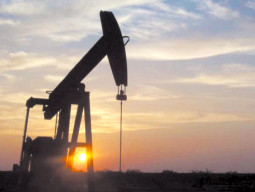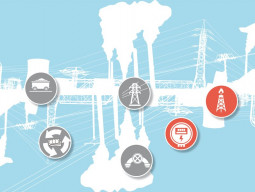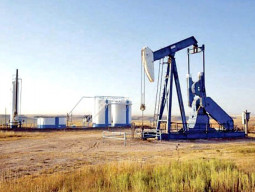
Pakistan Petroleum Limited (PPL) and Italy’s Eni have calculated that the price of shale gas should be $14 per million British thermal units (mmbtu), which has been rejected by the government as too much for the country’s existing tariff regime to absorb, an official told The Express Tribune.
The price was determined on the basis of expenditure required to drill for hard-to-reach shale gas reservoirs following a rise in interest in tapping this potential on the back of reports that Pakistan has massive reserves.
“There has to be a steady transition from conventional gas to tight and then finally to shale gas,” said Moin Raza Khan, Deputy Managing Director of PPL and head of its exploration operation. “This has to be a slow process because of the economics involved in the operations.”

Almost all the 4,000 million cubic feet per day (mmcfd) of gas produced in Pakistan comes from conventional gas fields, which can be reached relatively easily. Tight gas is trapped in impermeable rocks whereas gas trapped in shale formation is called shale gas.
Average consumer gas price is around $4 per mmbtu, undermining the prospects for shale gas to be brought into the system at this stage, Khan said.
“One reason why the US produces shale gas in abundance is because of the economies of scale. We would have to do that to make it feasible and this can’t happen overnight,” he said.

Pakistan hasn’t been able to attract many oil industry service providers, which own production equipment like rigs. “There are around five such companies here whereas in a country like ours there ought to be at least 30. With a rise in their number, competition ensues and cost comes down.”
So for the time being exploration firms including PPL are focusing on tight gas, for which the government has increased the price by 40% through a separate petroleum policy.
First tight gas flows entered the transmission and distribution system in June this year as production of 15 mmcfd started from Kirthar block, which is a joint venture between a Polish firm and PPL.
Sui dilemma
For more than 57 years, Sui gas field fuelled the economy, so much that natural gas became synonymous with Sui gas. And now it has depleted.
“If you ask me I think the gas pressure will sustain for another 10 to 12 years,” Khan said. “The pressure used to be 1,300 psi (pounds per square inch), which has come down to only 300 psi.”
To tackle that problem, the company regularly installs compressor plants on the wells to maintain the pressure. “We are considering installing equipment for 100 psi and even 50 psi.”
Offshore expedition
PPL along with its local and foreign partners plans to drill a well in offshore Block-G in the Indus, the world’s second largest delta after the Bay of Bengal.
“Having a discovery offshore is very important,” he said, referring to the successive past failures. “So far, 13 wells have been drilled in Indus. Gas was found only in one and that wasn’t commercially feasible to take out.”
Pakistan has a coastline spread over 1,990 km and sub-divided into Indus and Makran deltas. Indus delta alone is spread over 1.1 million square kilometres. Pakistan’s area covers over 240,000 sq km of this.
The last well Shark-1 was drilled by Eni and PPL in 2010. Before that, PPL had also tried to find oil and gas reserves 200km southwest of Karachi in Block-E. Shell, another multinational, was the operator of that well called Anne-X.
Pakistan has had bad luck in finding big gas reserves on its onshore fields for many years. Most of the prospective pieces of land in Sindh and Punjab have already been explored.
Attacks by militants in Balochistan and ongoing war against terrorism in Khyber-Pakhtunkhwa have made it difficult to carry out exploration there despite a crippling energy shortage caused mainly by depletion of gas reserves.
Published in The Express Tribune, July 17th, 2013.
Like Business on Facebook, follow @TribuneBiz on Twitter to stay informed and join in the conversation.
COMMENTS (3)
Comments are moderated and generally will be posted if they are on-topic and not abusive.
For more information, please see our Comments FAQ


















1714198824-0/rahatson-(1)1714198824-0-270x192.webp)
















1714129906-0/Clint-Eastwood-(1)1714129906-0-270x192.webp)






Saad Hasan Ji : . Pakistan has a coastline spread over 1,990 km . According to World Fact Book Pakistan has a Coast Line of 1,046 km. . Cheers
Smart decision - $14 is 40% higher than the highest gas price in the last 30 years and gas prices through 2040 are expected to remain below $8. If govt got out of the business of pricing energy this would be a no brainer as no company would produce gas which cost that much to produce.
Very short sighted decision. Pakistan does not have infrastructure for shale gas exploration hence it will require additional cost. If these extra cost is invested locally to develop infrastructure than investment will be recouped in few years time with a trained workforce. The shale gas allowed US and Canada to become self sufficient. Only drawback with shale gas exploration is if the company does not have good experience and self control ground water can get contaminated .